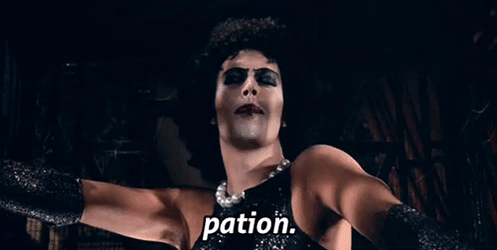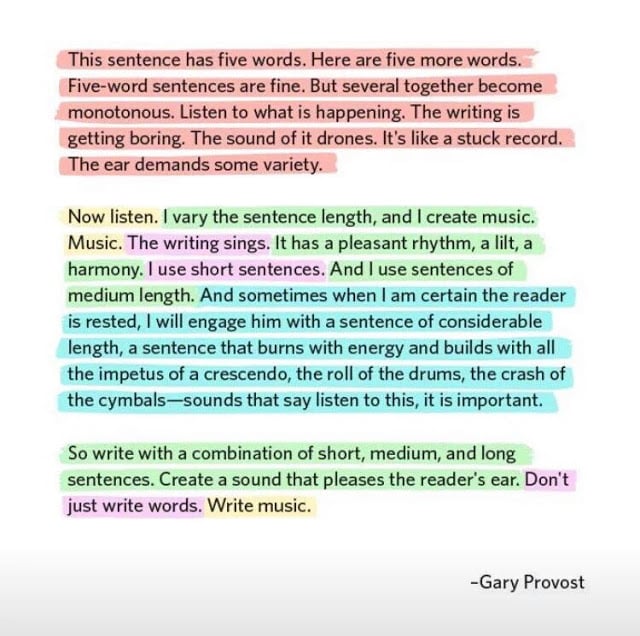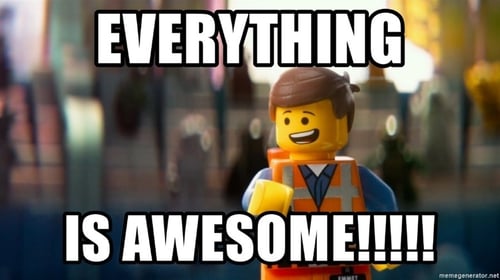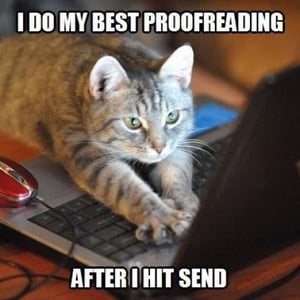The Top Writing and Editing Tips our Marketing Writers Want You to Know

"Writing is easy. All you do is stare at a blank sheet of paper until drops of blood form on your forehead."
‒ Gene Fowler
Marketers today are more likely to stare at a blinking cursor than a blank sheet of paper, but the sentiment is the same: Good marketing writing is a heck of a lot harder than it looks.
Fortunately, we’ve learned a few smart tricks over the years – and we’re going to share them with you.
Here at Clariant Creative, we’re all about content. Our content team literally writes (or edits) all day to the tune of 10,000 - 15,000 words per week. (For context, that’s like writing a master’s thesis every month.)
 So, yeah, we write a lot.
So, yeah, we write a lot.
We also field questions from clients about how they can be better marketing writers.
To help answer that question for them (and for you!), we asked three of our biggest word nerds to share their top writing and editing tips. And as it turns out, there are a few general themes that popped up:
- Have a clear brand voice
- Establish a good content flow
- Edit your own work
First up, let’s address brand voice.
Make Sure You Have a Recognizable and Relatable Brand Voice
A vital part of your marketing is your brand. And a vital part of your brand is your brand voice – not just what you’re saying but how you’re saying it.
Say you’re out shopping at the grocery store. You hear someone talking from two aisles over and instantly know who it is. What you recognize is not just how they sound – it’s their tone, volume, word usage and inflection.
Writing works pretty much the same way. Your brand’s voice is the combination of words, tone, sentence structure, punctuation marks, etc. that makes your customers say, “Oh yeah, I know who that is.”
Brand Voice Is Crucial
While it might seem nitpicky to have to decide whether contractions or em-dashes are part of your brand voice, there’s a reason why it’s so important. If your brand voice is undefined (or worse, all over the place), your writing will be equally muddied, confusing your readers about whether you’re the right fit for them after all.
That means website, social media, print media, blogs, emails – everything should sound like the same voice.
Start By Knowing Your Brand
First things first, you have to know your brand.
- Who or what is it?
- Why is it in existence?
- Who are your customers?
- What are they looking for?
- What questions do they have?
- How do they find you? How do they want you to speak to them?
If you’ve done the work to create your buyer’s journey, buyer personas, story brand, and other cool marketing development tools, we’ve got good news – you probably have all these answers already.
Now you can start experimenting.
Let Your Brand Voice Emerge Naturally
Think about how your brand would talk if it was a person.
Clariant’s Director of Content and primary editor, Krista Elliott, has a knack for creating brand voice avatars. One client’s voice is akin to “Cate Blanchett in a white suit” while another is, “Your nice next-door neighbor who’s a doctor and goes for a run every day.”
It’s more than a little weird, but it helps Krista – and the rest of the team – more easily envision how the brand voice should sound. This avoids the off-putting dissonance the reader feels when a laid-back brand uses formal writing – or vice versa.
 "Make sure your writing sounds like something that would actually come from that voice during a typical conversation. Then, just like in real life, look at who you're talking to, and fine-tune accordingly so your audience is comfortable."
"Make sure your writing sounds like something that would actually come from that voice during a typical conversation. Then, just like in real life, look at who you're talking to, and fine-tune accordingly so your audience is comfortable."
- Krista Elliott, Director of Content
One of our amazing freelance writers, Julia Byrd, uses this exercise to help writers determine their own brand voice:
- Set a timer for five minutes and write down everything you did this morning – in as much detail as you can – as if you were talking to your target customer.
- Use your five senses, dialogue, and whatever else it takes to pull that customer into your story.
- Fight the urge to stop writing before the timer goes off.
- After your time is up, go back and read it.
- Pay attention to the phrases you like most, the sentence structure you use, and your tone of voice.
 This exercise can easily be used to figure out your organization’s brand voice as well: Again, picture your brand as a human being. How would they describe their morning routine?
This exercise can easily be used to figure out your organization’s brand voice as well: Again, picture your brand as a human being. How would they describe their morning routine?
Did they “savor the aromas and flavors of that first, exquisite sip of morning coffee?” Or did they “slam down a cup of joe so strong, my fillings melted”?
Practicing this helps: Our Senior Content Strategist, Rachelle Koenig, often uses the morning pages exercise from The Artist's Way and writing prompts from resources like Journal Buddies to get deep and personal when developing a brand voice.
 "Use prompts and write as if your brand is doing the talking. Keep going until you feel like you've mastered your brand’s voice and style. It may mean writing like that for a while."
"Use prompts and write as if your brand is doing the talking. Keep going until you feel like you've mastered your brand’s voice and style. It may mean writing like that for a while."
- Rachelle Koenig, Senior Content Strategist
Focus on How Your Writing Flows
Now we’re getting into the good stuff – the music, if you will.
If your brand voice is the lyrics, how your writing flows is the arrangement. And again, it can be tricky to find the right way to organize it all.
On one hand, too much zigzagging, disjointed information, distraction and “squirrel!” will bury your key points and confuse the reader.
On the other hand, this is marketing writing, not a research paper. There needs to be some room for an impactful zigzag, a well-placed standalone sentence or even a bit of antici…
 Writing flow is one part mechanics, one part artistry. The artistry comes with experience – the mechanics are pretty straightforward.
Writing flow is one part mechanics, one part artistry. The artistry comes with experience – the mechanics are pretty straightforward.
Here are a few suggestions from our writers:
Start and End Strong
If you don’t have a good introduction, you risk losing readers in the first few seconds.
A good introduction should:
- Tell the reader what they’re going to get out of it. Don’t give away the ending, of course, but they need a general idea what to expect.
- Be interesting enough that they want to keep reading. Humor is good – if it’s actually funny. Metaphor, analogy, and maybe even a little foreshadowing can draw readers in further.
Your conclusion should complement your introduction, but in reverse order.
This is where you “tell them what you’ve just told them.” Be brief, but give enough of a reminder to spur readers into action.
Mix Up Sentence Structure
Sentence structure is where the wheels often fall off the cart. Don’t believe us? Let the late and legendary writing instructor Gary Provost illustrate:

Krista’s in full agreement with this point:
 "Rhythm is so important when it comes to making a piece readable and engaging, so your sentence lengths and paragraph lengths should vary. If everything is short, it creates a staccato rhythm. That gets annoying fast. If everything is long, it turns into this monotonous, pretentious drone and is really tiring to read."
"Rhythm is so important when it comes to making a piece readable and engaging, so your sentence lengths and paragraph lengths should vary. If everything is short, it creates a staccato rhythm. That gets annoying fast. If everything is long, it turns into this monotonous, pretentious drone and is really tiring to read."
- Krista Elliott, Director of Content
Make sure you have a good mix of long, short, medium and even one-sentence paragraphs, she adds. Those uber-short paragraphs are gold when you’re slamming a point home or leading up to a reveal.
Here are some solid guidelines to use for sentence structure with marketing writing:
- Use shorter sentences and paragraphs to introduce a concept or make a key point.
- Use longer sentences and paragraphs to dive into an explanation or supporting details.
- NEVER bury your key point in the middle of a huge paragraph.
Watch Your Adjectives and Conjunctions
Everything is not “awesome.” It’s also fantastic, stupendous and mind-blowing.

 "Other than keywords, key phrases, proper nouns and pronouns, your reader shouldn't have to endure the same adjective over and over in a single piece of writing. That's what a thesaurus is for."
"Other than keywords, key phrases, proper nouns and pronouns, your reader shouldn't have to endure the same adjective over and over in a single piece of writing. That's what a thesaurus is for."
- Rachelle Koenig, Senior Content Strategist
Another super-common mistake that hurts your flow is too many conjunctions. Overusing “and,” “but,” and “or” can make your writing seem choppy. Take this example:
Marketing templates are convenient, easy to use and effective and save marketers a lot of time and effort.
It's not the worst sentence, but it sounds a little bit choppy with all those "and’s, right?
Instead, try this:
Marketing templates are convenient, easy to use and effective, saving marketers a lot of time and effort.
“Often, if you’re talking about a result, you can replace the ‘and [verb]’ at the end of the sentence with the -ing form of that same verb,” explains Krista. “It’s a tiny change that makes a sentence much more graceful.”
Be Your Own Editor (Even If You Have an Editor)
You know that old saw about teaching a man to fish, so he’ll eat for a lifetime?
Editing is basically learning to fish. Or write. Or something.
Whether you have access to an editor or not, knowing how to edit is hugely helpful. Why? Because it helps you identify what you need to work on to make your writing even better.
Do your sentences flow like melted butter, but you bounce all over the place with your points? Or maybe your piece is structured gorgeously, but the voice veers wildly from casual to formal and back again. Once you see those things, you can note them – and then fix them.
So, even if you have an editor, try not to fling your roughest draft over the wall for them to take to the finish line. Instead, put on your editing hat for a moment and imagine how the piece will come across to the reader.
When Should You Edit?
When to edit is a source of debate online for some reason. Some say edit while writing, some say to edit way after writing. (All our blogs are edited multiple times along the process, in case you’re wondering.)
Here’s the thing – we’re not the boss of you. When you edit is up to you. Byrd compares the writing and editing process to forming a clay pot.
 "You don’t start off making a clay pot. You start off with an ugly lump of clay that has no shape, no form, no purpose. It takes work to get it to look like a pot. The same with writing. Those in-between stages are the best time to do your editing."
"You don’t start off making a clay pot. You start off with an ugly lump of clay that has no shape, no form, no purpose. It takes work to get it to look like a pot. The same with writing. Those in-between stages are the best time to do your editing."
- Julia Byrd
While you’re writing, a good way to edit is simply to look over each sentence as you go. Does it work with what else you have so far? Does it add to the piece or is it just re-stating the same thing in a different way? Would different word choices get the purpose point across better?
Once you’ve written your piece, go back and reread it, this time paying close attention to the details. You’ll get rid of more unnecessary words, possibly rework a sentence or two, and correct errors.
Find Errors by Reading out Loud
All three of our writers recommend reading your work out loud to find those pesky grammar errors and omissions that always persist.
“Our brains automatically correct misspellings, grammatical errors and even poor sentence structure,” says Rachelle. “But once you read it out loud, your brain can’t override what you say. It’s much easier to find errors and make changes that way.”

Another thing to watch for is filling in the blanks,” adds Krista. “When we start to get good at a topic, we tend to forget the reader doesn’t know what we know. And that can lead to the piece forcing the reader past these giant gaps in their understanding. To the writer it's all making sense … but while they've moved on to Point C, the poor reader is still trying to figure out how the hell you got from Point A to Point B.”
Lean on Editing Resources for Help
Every writer and/or editor has their weak spot. For Krista, it was AP style (she blames it on being Canadian, but we don’t buy it – Ed.)
“I tried for ages to memorize AP style, but couldn't, and I kept forgetting to look things up because I didn't know what I didn't know,” she says. “So, I downloaded a Word extension that checks AP style for me. And now, ironically, I'm starting to memorize AP style because I run every piece through the checker.”
There are a thousand resources out there for writers. Some of our favorites include:
- Grammarly
- Microsoft Word “Read Aloud” Feature
- Capitalize My Title
Want More Writing and Editing Tips? We’re Here to Help!
The best writers make it look easy – even though an immense amount of effort and angst goes into each sentence, word and paragraph.
Fortunately, like any other skill, the best way to improve is to practice, practice, practice.
“When in doubt, just write,” says Krista. “Your voice will emerge as you gain confidence. And then your voice will evolve as you learn and grow and change as a person and a professional. The absolute coolest thing for any writer to do is to look back at their writing from five years prior and see how far they've come.”
With a lot of practice, a strong and consistent brand voice, a great flow and some thoughtful editing, you can knock your writing tasks out of the park, creating gotta-keep-reading content that grabs attention – and more leads.
At Clariant Creative, we work with clients to help them write and edit content that connects and converts. If you have any questions about how to get started with your writing for a lead generation project, feel free to reach out.







